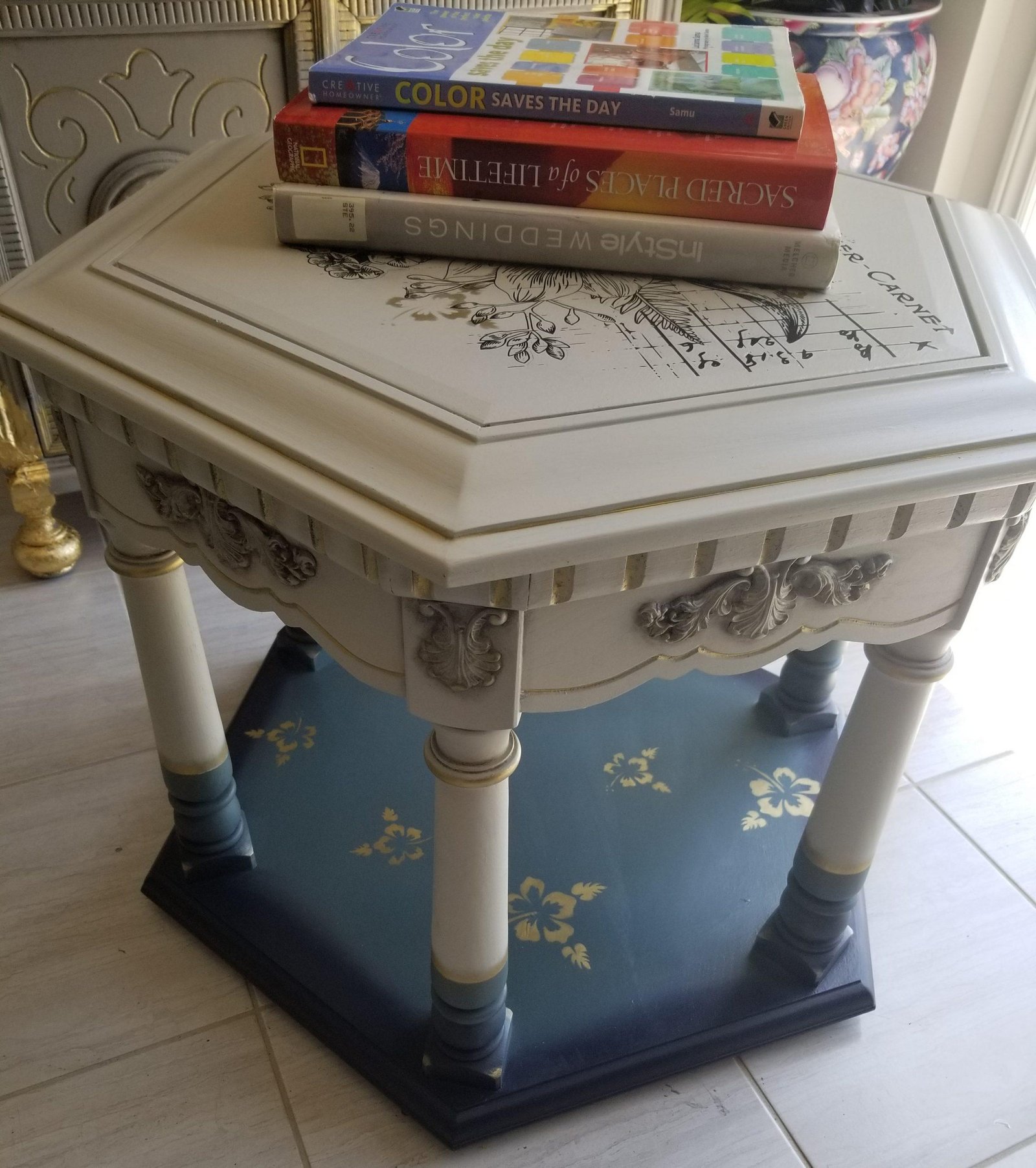Products usually come with user’s manual to help understand the best way of using it. However, clay paint comes with wide variety of claims, which may or may not prove themselves.
Here are few do’s and don’ts which are true universally for any and every clay paint, regardless of the brand, that I have put together for those, painting or thinking of painting with clay paint.
Clay Paint Bleed Through
Do:
Some woods will bleed through white and light colored paint. If your furniture is red like mahogany or if it’s pine, it will bleed through. Sealing the wood fixes this problem. You have to seal the wood first with shellac based primer. Two coats of primer and then paint it over with your choice of clay paint color. Pay special attention to corners where two pieces of wood meet. These areas bleed worse and may need more than two coat.
Don’t:
Do not sand that piece a lot, as sanding will encourage bleed through. Do not sand primed areas or the seal will break.
Spotty paint application
Sometimes, a spot will show up if you didn’t properly clean the furniture first.
Do:
Clean the piece thoroughly with soap and water. A quick coat of shellac will also help in this issue. When it’s dry, apply two coats of clay paint.
Don’t:
Do not try painting a piece which is covered with grease and grim. Paint will not stick to it, well.
Brush Strokes in Clay Paint
Brush strokes show up for a few different reasons.
Reason : The Paint is Too Thick.
Do :
You can combat this a bit by dipping the paint brush in water before dipping the brush into the paint. Or you can use a spray/mister bottle and spray water while painting with clay paint. This trick always minimize brush strokes.
Don’t:
Do not load your brush very heavy with clay paint. And avoid keep brushing at the same place.
Reason: Paint Needs to Be Stirred
Do:
Make sure that you’re stirring the paint very well. It helps to shake the paint as well. Especially, if paint has been sitting for some time. Also, when you receive a new bottle/can of paint stir it well.
Don’t:
Do not use paint without shaking or stirring first. This will cause brush strokes or worse, the paint will lump every where on the piece.
Check out “Blending & Layering Clay Paint – Tips, Tricks & Techniques” for Tips on how to use clay paint
Reason: Using the Wrong Paint Brush
Do:
Your paint brush needs to have soft, flexible bristles. I prefer brushes with thin bristles to avoid brush strokes. Remember, there is a brush for every purpose, and it works best for that purpose only. Wax brush is good for waxing and clay paint brush is good for clay painting.
Don’t:
Using a wrong brush will cause brush strokes, which can impact the final look of your master piece.
Clay Paint Isn’t Sticking
Do:
Make sure that you are painting the correct type of surface, that has been cleaned, thoroughly.
Don’t:
Do not paint a piece of laminate or melamine, without it’s special primer coated first. Do not paint the furniture that has years of furniture polish on it, or is covered with grease and grim, which may prevent paint from sticking.
Check out “Steps to clay paint your furniture pieces” for some help in understanding what comes first and what comes later, when painting with clay paint.
Clay Paint Cracking
There are few reason for clay paint cracking on a surface.
Reason: Dirty Furniture
Do:
If the cracks are deep, you may need to sand the piece. Then seal it with shellac based primer, let it dry and then paint another coat of clay paint.
Don’t:
Clay paint cracks when the furniture wasn’t cleaned well before painting. Dust and furniture polish can stop paint from sticking to the surface. Do not paint a piece of furniture which is not cleaned thoroughly.
Reason: Painting in Extreme Temperatures or Humidity
Do:
Try to paint in a temperature controlled environment. Try to keep your paint in warmer areas. Sand lightly and seal it with shellac based primer, before applying another coat of paint. Sometimes paint can crack if the environment is too hot, cold or humid.
Don’t:
Don’t paint in direct sunlight on hot days. Don’t paint when it’s too cold.
Reason: Paint is Applied Too Thick
Do:
Try dipping your paint brush in water before painting to thin it down a bit. Apply thin, even coats. Here your spray bottle will also help you at great lengths.
Don’t:
Do not paint with very heavily loaded brush, or apply paint when it is too thick.
Clay Paint Looks Streaky
Do:
Apply at least two coats of paint, letting each coat dry thoroughly between coats. Usually two coats will do the job, however, it entirely depends on you what look you are after, and each look will have it’s own requirements.
Don’t:
Do not expect that paint will cover in one coat.
Hope these suggestion help and make things easier for our clay paint artists. Please do leave comments, if you have other tried and tested do’s and don’ts.

